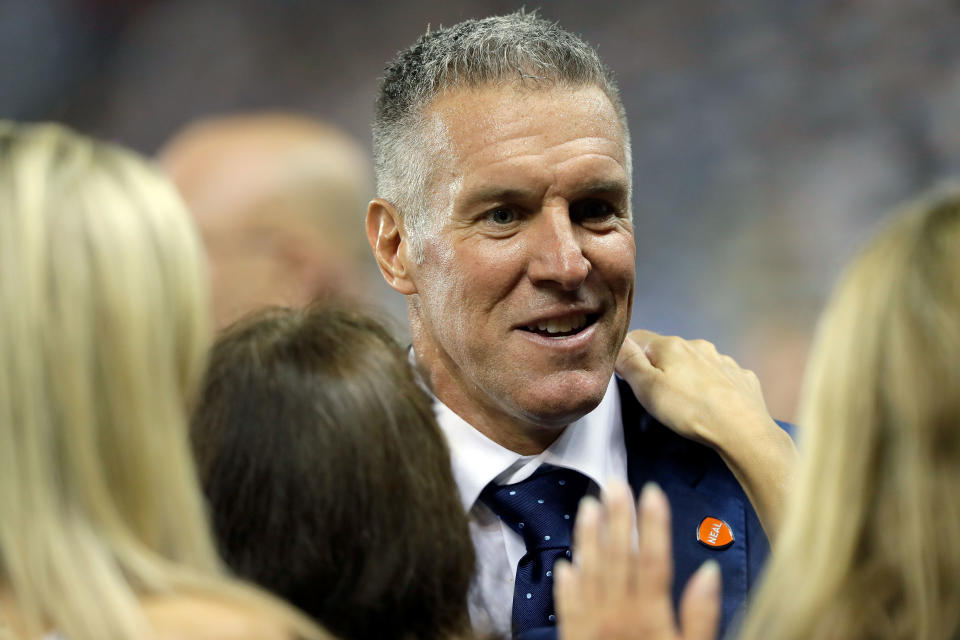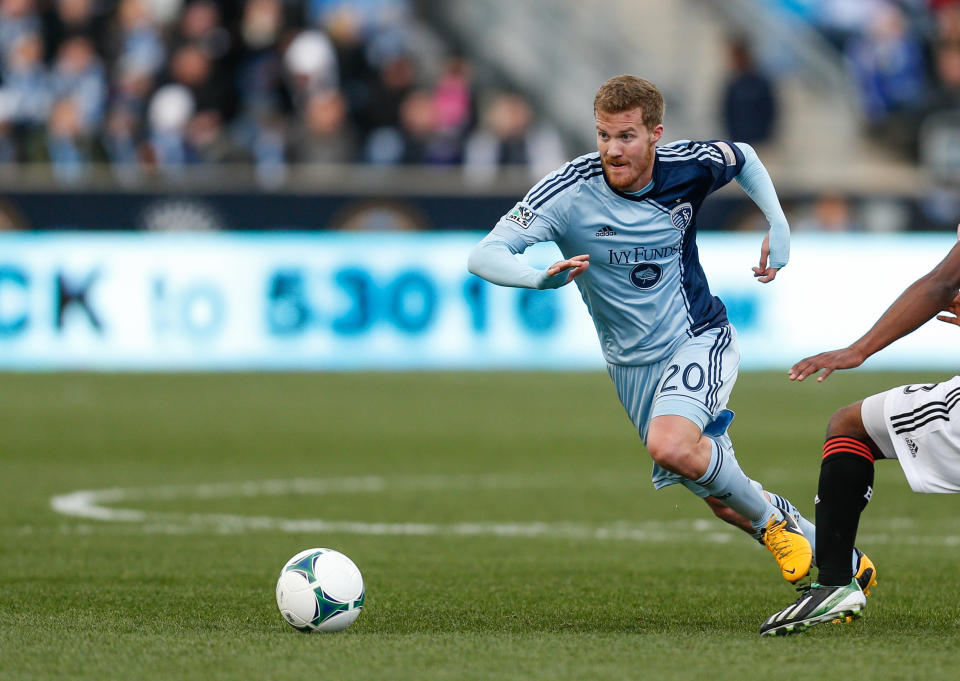How Sporting Kansas City’s Peter Vermes built a Barcelona pipeline

It all began with a move to the birthplace of Salvador Dalí; to Figueres, a city in the Northeastern-most province of Spain, and home, in 1991, to a second-division soccer club. It’s there that you’ll find the roots of one of the more unlikely MLS pipelines: from Barcelona to Kansas City.
It began with a captain who would go on to work at FC Barcelona; but who, just as importantly, doubled as de facto club social director; who ran a high-end clothing store on the side; and who wanted to practice his English.
Peter Vermes, at the time, was trying to learn Spanish. So the U.S. national team regular, living in his fourth country in four years, struck up a convenient relationship with that captain. His name was Pere Gratacos.
Gratacos was a former Barcelona B defender who had moved to UE Figueres for the final chapter of his playing career. During the two years he and Vermes overlapped, Gratacos and his wife would take Vermes and his wife on sightseeing tours of the region.
“Pere and I were good friends,” Vermes says now.
And it’s a good thing they were. Because 20 years later, Gratacos was one of several links that helped Vermes, now the ninth-year manager of Sporting Kansas City, craft this unique connection. A relationship with the world’s most famous academy that has yielded an MLS Cup-winning defensive midfielder, and now a second No. 6 who has started all but one game en route to the 2017 playoffs.
In all, four La Masia products have arrived in Kansas City in five years. Two are on the current roster that will face the Houston Dynamo in a Knockout Round match Thursday night. One of the two, Ilié Sanchez, has played every minute of every MLS match, save for an August game at Seattle three days after a 120-minute U.S. Open Cup semifinal.
But the pipeline’s foundation was built last century in Catalonia, where Vermes played with at least six future Barca employees. And its pioneer arrived in 2012, as a scrawny 20-year-old. That pioneer was Oriol Rosell.

Rosell was originally one name on a list that Peter Smith, a former teammate of Vermes, had passed on to the Kansas City coach and technical director that summer. Vermes perused the list of available players, which featured “a slew of Barcelona kids,” then handed it off to assistant Kerry Zavagnin. Pretty soon, Vermes was on the phone with Gratacos, at the time a director at Barcelona’s training facility.
“I had called Pere and asked him about [Rosell],” Vermes recalls. “And he said, ‘Look, he’s a young player, he’s probably never going to play at Barcelona, but he’s got some good talent.’” That conversation, coupled with what Vermes and Zavagnin had seen on film, led them to arrange a trial for Rosell in Kansas City. And three days were all the Catalan midfielder needed to convince Vermes to sign him.
Two years, 43 MLS appearances and one championship later, SKC sold Rosell to Sporting Clube de Portugal for $1.5 million. But his departure didn’t terminate the Barcelona connection; rather, he had become another link.
Fast forward to this past winter, and one day after Sanchez got off the phone with Vermes for the first time, he grabbed his phone again and called Rosell. The two had played together for one year on Barcelona’s B-team, with Sanchez often starting ahead of Rosell. Sanchez also rung up Jordi Quintilla, who signed with Sporting KC in 2015 and spent 10 months at the club. All three players had come up through Barca’s academy, and overlapped in the Barcelona B setup.
“We still have a very good connection and relationship with Rosell,” Vermes says. “So it’s easy when a guy like Ilié can pick up the phone and say, ‘Can you tell me about the club, and how things are there?’ And when you have a former player who gives a raving review, it obviously helps you.”
Sanchez remembers all the conversations. “They mentioned that Uri had a really good time here,” he says of his talks with Vermes and Zavagnin. And when he spoke with Rosell and Quintilla, “they both explained to me more or less the same idea.”
This past summer, it became Sanchez’s turn to relay his experiences in Kansas City when the club became interested in former Barcelona B winger Cristian Lobato. But Lobato didn’t have to dial up an old friend for the first time in a while, because he and Sanchez already spoke weekly. They were close during their Barca B days, and via the phone calls, Lobato already knew about Sanchez’s positive reviews. They weren’t the sole reason he signed – and the info Sanchez relayed to the coaching staff wasn’t the sole reason the club made on offer for Lobato – but they clearly weren’t a hindrance.

The relationships between old La Masia mates, though, aren’t the only ones that sustain the pipeline. Over the years, Vermes has built a Catalonian network of sorts. He has contacts inside Barcelona, despite Gratacos’ sacking earlier this year. He had kept in touch with Tito Vilanova, another Figueres teammate, until the former Barcelona manager died from cancer in 2014. He also played with Jordi Roura and Aureli Altimira, the current La Masia directors.
In fact, in 2013, after Sporting won MLS Cup, Vermes and Zavagnin traveled to Barcelona for 12 days of comprehensive, behind-the-scenes access at the club. Vermes had arranged it through Vilanova and Gratacos. Over the 12 days, he and Zavagnin saw everything, from first-team training to an in-depth presentation from an academy goalkeeper coach. “That’s how specific we were getting,” Vermes says. “It was tremendous.”
Even with Gratacos no longer in his old position, and Vilanova having passed away, Vermes says he still has “the ability to call on some people” within the club if necessary.
But over the years, he’s also developed contacts “on the periphery” – former players, “I think you would call them agents,” who give honest assessments of players rather than blindly promoting clients. One of these contacts identified Lobato this past summer. One also connected Vermes with Sanchez six months earlier.
Vermes and Sanchez spent over an hour on the phone when the connection was made. Vermes also called Gratacos, who knew Sanchez well from his time at Barca. But the decision on Vermes’s end was already made.
“We were actually looking at a few other defensive midfielders that we had spent quite a bit of time on,” he explains. Then Sanchez “became available, and we didn’t even hesitate. It was like, OK, I know we looked at all these other guys for quite some time, and we had a pretty good idea of who we wanted… we’re going to take Ilié.”
Because this wasn’t the first time Vermes had looked at Sanchez. Sporting had identified him three years earlier. Back then, the timing wasn’t right, mechanisms weren’t in place, sufficient funds weren’t available. Three years later, it was, and they were.
In a way, Sanchez is not only a steady, rock-solid fixture in Vermes’s team, but also an embodiment of the pipeline. He represents every tenet of it. The eye-catching performances at Barca B. The relationship with Vermes’s Figueres teammate, Gratacos. The connection via an agent. The use of Rosell as a resource. And now the willingness to become a resource for Lobato.
Oh, and he’s had instant success, too. That, in the end, is the objective here; the whole point of all the connections and relationships. Sanchez fit in immediately. And that’s not a coincidence. “Our model of play is one in which some of the characteristics are similar,” Vermes says. “It’s a seamless transition for a lot of those players when they come to us. It’s not a big jump.”
Sanchez echoes that thought: “There are a lot of things similar between Barca and Sporting. Eighty, 90, 85 percent? I don’t know the percentage. But it’s very much similar.”
Which is why Sanchez hasn’t just fit in, he’s excelled. It’s yet another reason why this improbable pipeline has been beneficial. And it’s a reason it likely won’t dry up.
“Spain is a country we look to recruit players from,” Vermes says. “Because a lot of teams play a 4-3-3. It makes it a lot easier when we are bringing players in that are already playing in a very similar model. So it’s definitely a country that we continue to look at, [Barcelona is] is a club that we continue to look at, and closely monitor as well.”
– – – – – –
Leander Schaerlaeckens contributed reporting.
Henry Bushnell covers soccer – the U.S. national teams, the Premier League, and much, much more – for FC Yahoo and Yahoo Sports. Have a tip? Question? Comment? Email him at henrydbushnell@gmail.com or follow him on Twitter @HenryBushnell.



